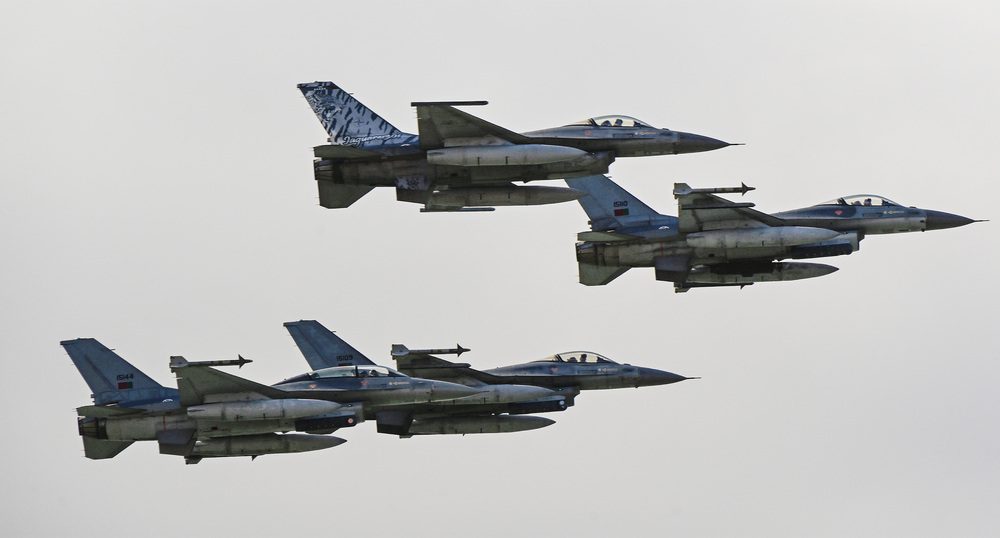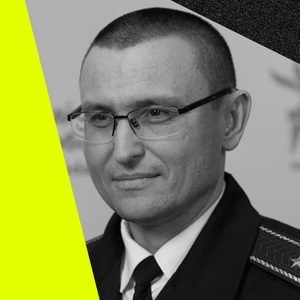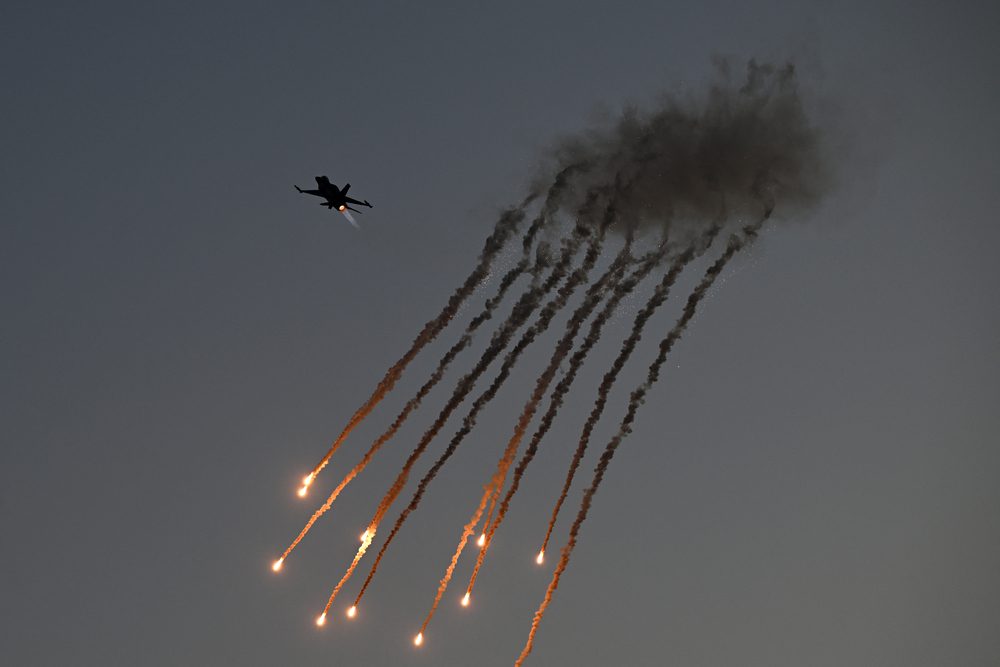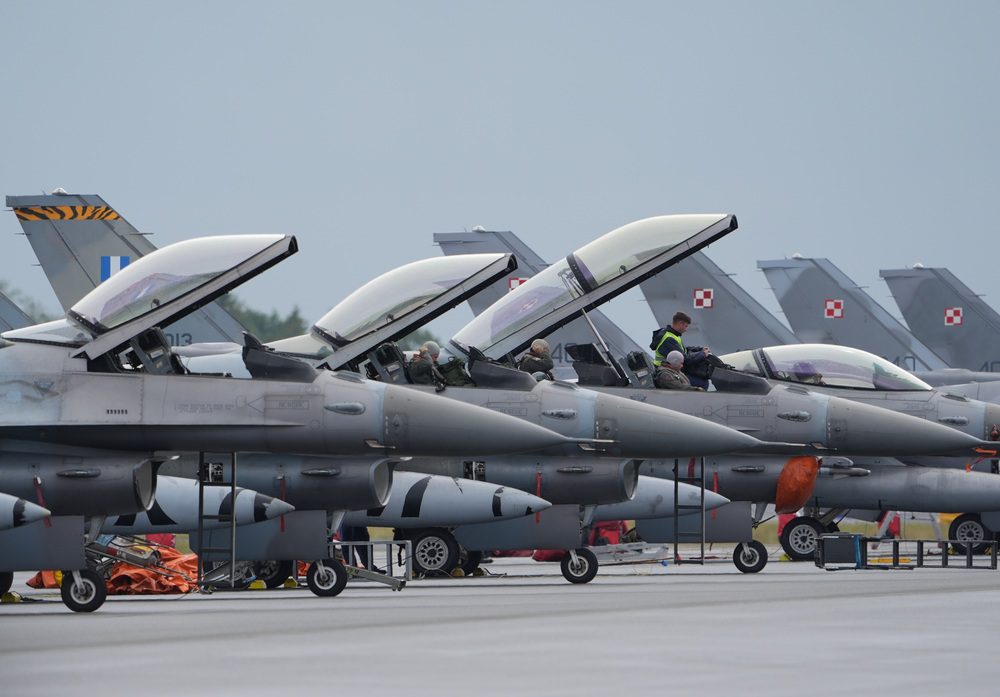Russian Reconnaissance Drones Are Firing Missiles at Ukrainian Airfields. Are We Able to Protect the F-16s We Are Waiting For?

Ukraine is due to receive F-16 fighter jets soon. The long wait for the American planes was primarily due to the indecision of the allies, the preparation of the infrastructure, and the training of Ukrainian pilots. Last, but not least, there was the issue of organizing security for the aircraft.
Sensing the approach of the X-hour, the Russians began to attack Ukrainian airfields. Unfortunately, the enemy’s successful attacks sowed doubts about Ukraine’s ability to protect its valuable aircraft. However, it is the partners who can help in this regard.
Svitlana Hudkova, editor of Zaborona, together with experts, found out why Russian reconnaissance UAVs are flying in the Ukrainian rear and whether there is any countermeasure.
Russian reconnaissance drones: How to fight back
On July 1, the Russians fired ballistic missiles at the airfield in Myrhorod, where Su-27 aircraft were stationed. According to the Ukrainian Air Force, only one plane was lost (not five, as the Russian Defense Ministry had dreamed), but the enemy missiles still reached their target.
And they were helped by UAVs that managed to fly all the way to Myrhorod, film the airfield and even the moment of the explosion. In the following days, the situation with reconnaissance drones and strikes from Russia was repeated in Poltava and Kryvyi Rih.
However, how is it that an enemy UAV spends hours in Ukrainian airspace and the Defense Forces do not destroy it? Military-political expert Oleksandr Kovalenko explains: there is a simple lack of countermeasures and interception.

“Firstly, there is a lack of short- and medium-range air defense systems. In addition, not all our systems are suitable for this purpose. They need to be modernized. For example, we still have the well-known Strela-10 air defense system from the Soviet times, which is not very effective against the Orlan in its original form. But if we modernize this system by installing the Valley optical, it can effectively work on small-sized objects,” the expert says.
In addition to air defense systems, electronic warfare (EW) systems and light aircraft should also be used in the fight against Russian reconnaissance UAVs.
“Unfortunately, we do not have enough electronic warfare systems to cover the entire sky. In Odesa, for instance, a single-engine Yak-52 aircraft is used to intercept drones. In the Poltava region, which is a little further from the Russian border, this method is also possible, but is not used for some reason. First foremost, we need air defense systems, because while the Yak-52 is taking off, the reconnaissance drone will be able to reach and fix on the target. And the SAM will destroy it in a few seconds,” Kovalenko adds.
In general, the activation of Russian reconnaissance drones in the rear cities is somewhat new, as these devices were previously used to target the front lines. Reconnaissance in the rear of Ukraine was conducted with the help of a long-range radar detection and control aircraft, A-50. After losing two such radars, the enemy was forced to switch to UAVs.
“The Russians can launch them into Ukraine every day because they are cheap and there are a lot of them. Although this reconnaissance tool does not provide as much information as the A-50, it is enough to adjust strikes deep into the territory of Ukraine with ballistic weapons,” the expert summarizes.

The F-16C jet plane performs during the Antidotum Air Show in Leszno, Poland, on June 22, 2024. Photo: SERGEI GAPON/AFP via Getty Images
Protecting the F-16s from Russian missiles
“The Russian Federation will launch a large-scale campaign to destroy the F-16s as soon as they reach Ukraine. Protecting them is very important. Therefore, I assume that Ukraine’s partners will want to move rather slowly in realizing the delivery of the F-16s,” Peter Dickinson, an international analyst at the Atlantic Council, recently told Zaborona.
Patriot and SAMP/T
The NATO summit in Washington confirmed the transfer of Patriot air defense systems from Germany, Romania, and the United States. Italy has also promised to transfer the SAMP-T system, which is capable of shooting down ballistic missiles, too.
A full-fledged echeloned air defense around airfields is one of the most effective measures to protect the F-16 aircraft, says Oleksandr Kovalenko.
“We need a sufficient number of short-, medium- and long-range weapons, such as Patriots and SAMP/Ts. All this had to be comprehensively formed to protect one of the airfields. And, of course, we are not talking about Myrhorod, but about an airfield located as far as possible from the range of enemy reconnaissance drones and ballistic missiles. In the worst case, Kinzhal missiles can still reach it, but the Patriots can handle it,” the expert believes. “The rest is taken care of by short- and medium-range systems. Of course, no air defense system can provide one hundred percent protection, but it is better to have this protection. Airfields can be protected, it is not an impossible mission.”
Protective structures over aircraft

Of course, this is an important way, but not the only way. A set of measures is needed to protect aircraft from enemy missiles more reliably. They could include, for instance, construction of protective structures over aircraft, says military expert Vladyslav Selezniov.
“These can be lightweight structures — metal hangars to cover aircraft. And we need to build more such hangars than there are aircraft to mislead enemy reconnaissance drones. Or use the option of creating concrete protective structures. This experience is actively used by the Iranian army, and Syria has also built many arch-type shelters for aircraft,” the expert says.
Destruction of aircraft and complexes
However, the most effective way would be to destroy strategic aviation and complexes from which ballistic missiles are launched into Ukraine, Selezniov adds.
“Unfortunately, Russia’s strategic aviation is based very far from our border. Therefore, we need to ask our allies for long-range missiles or strengthen the capabilities of our design bureaus that produce attack drones capable of flying up to 3,000 kilometers. So far, we have confirmed that our drones have covered about 1800 kilometers when they moved towards Orsk. This is not enough. However, I think they are working on a solution, and we will see the results soon,” the military expert said.

Pilots prepare in the cockpits of their F-16 jet planes for flight during the NATO Air Force exercise “Tiger Meet” at the 51st Tactical Aviation Range “Immelmann.” Photo: Marcus Brandt/picture alliance via Getty Images
What if the F-16s could be safely based abroad?
This possibility, at least for some of the aircraft, was announced by Serhiy Holubtsov, head of aviation at the Ukrainian Air Force Command.
“There is a specific figure for how many F-16s will enter Ukraine. A certain number of planes will be stored at safe airbases, not in Ukraine, so that they are not targets there. And this will be our reserve, if necessary, to replace faulty aircraft, during routine maintenance,” the military explained. “That is, so that we constantly have a certain number of aircraft in the operational composition that will correspond to the number of our pilots. If there are more pilots, there will be more aircraft in Ukraine.”
In general, if we are talking only about storage and these aircraft will not perform combat missions on the territory of Ukraine, then this is quite possible. Although negotiations on this issue are probably still ongoing. However, it is unlikely that NATO countries will allow the deployment of Ukrainian aircraft involved in the war. And although Oleksandr Kovalenko is sure that the Russians will never strike an airfield in Poland or Romania, Vladyslav Selezniov still believes that the fear of being sucked into a war will not allow the partners to agree.
After Serhiy Holubtsov’s statement, Russia announced it would consider Ukrainian F-16s and the foreign airfields where they will be deployed a legitimate target.
“They [the allies] care only about their own security and are focused on that. They are not ready to become a party in the conflict. It is clear that the Russian side will consider both the combat work on Russian missiles and the deployment of combat aircraft of the Armed Forces of Ukraine on the territory of a NATO country as direct involvement in their confrontation with Ukraine. They are afraid that Russia will start striking at their airfields, so they avoid such situations,” Vladyslav Selezniov summarizes.






